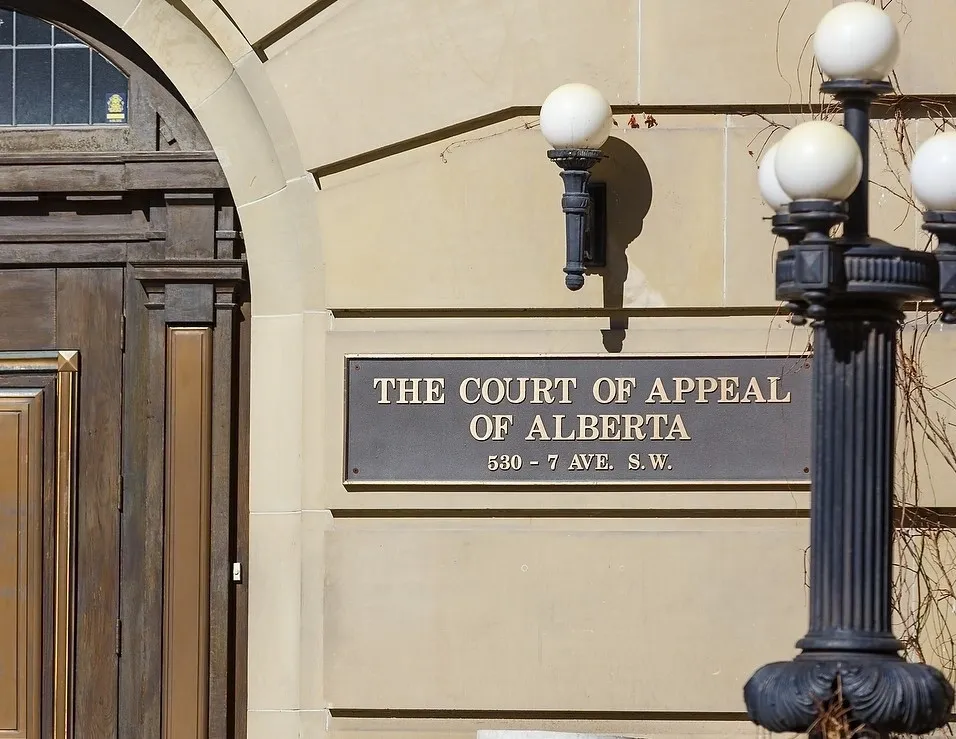The Alberta Court of Appeal: Family Law Appeals Explained
June 6, 2024
Family

Family law cases can be emotionally draining, financially heavy and generally challenging to navigate. The complexities are more pronounced when the parties involved are not satisfied with the original trial court’s verdict and wish to appeal the decision. Understanding the intricacies of the Alberta Court of Appeal, particularly how appeal works, the reasons for appeal, when it’s appropriate to appeal, and the steps involved in an appeal process, aids in illuminating an otherwise murky legal path.
Understanding the Alberta Court of Appeal
The Alberta Court of Appeal is the highest court in Alberta, Canada, superseded only by the Supreme Court of Canada. Its primary role is to review decisions from lower courts for possible errors. These court judgments might emanate from many areas, including family law.
How Appeal Works
In the context of family law, an appeal is a formal request to a higher court (Alberta Court of Appeal) to scrutinize the legal decision made by a lower court. The appealing party, also known as the appellant, aims to convince the court of appeal that the lower court made a legal error which impacted the case’s outcome.
It is essential to understand that an appeal is not a replay of the initial trial. The Court of Appeal does not accept evidence that wasn’t exhibited in the initial trial, nor hear testimonies anew nor reassess witnesses’ credibility. Instead, it reviews the trial process and the application of the law in the original case.
Reasons for Appeal
Legal errors, prejudice, and absence of fact are the three primary categories of reasons for challenging a lower court’s ruling.
1. Legal Errors: The appellant often claims that the judge made a mistake in applying the law. Misinterpretation or misapplication of a statute, ignoring pertinent case precedents, or issuing a verdict that is against the law can all form the basis of a legal error.
2. Prejudice: An appellant can argue that the judge was biased during the original trial, impacting the final decision. For instance, if the appellant can demonstrate that the judge had a personal relationship with the opponent, it may constitute a precedent for bias-induced prejudice.
3. Absence of Fact: If fundamental facts were either omitted, misinterpreted, or misunderstood in the judgment, it could constitute a reason for an appeal. It should be noted, however, that this does not mean the appellant can introduce new evidence that was not provided in the initial trial.
When Is It Appropriate To Appeal?
Deciding whether to appeal can be quite complex, requiring careful evaluation of the potential benefits and the broader implications of such a move. Here are some factors to consider:
1. The Significance of the Alleged Error: It is vital to understand that an appeal based solely on the dissatisfaction with the original verdict is unlikely to succeed. Instead, the appellant should show that a significant legal error occurred, which impacted the decision of the case. The question is not whether you lost the case, but whether the judicial process was flawed.
2. The Cost of the Appeal: Appeals are often costly, time-consuming endeavors. On top of the legal fees, there are also financial implications relating to document preparation, court transcripts, and potentially, should you lose the appeal, you may have to pay the costs of the other party.
3. Delayed Finality: Appeals prolong the legal process, leading to delayed closure. This delay can mean an extended period of uncertainty and increased emotional stress.
4. The Risk of Setting Unfavourable Legal Precedent: If your case involves a new or contentious area of law and you lose at the Court of Appeal or Supreme Court level, the resulting decision could become a legal precedent that affects future similar cases.
Steps in the Appeal Process
1. Notice of Appeal: The essential first step is to file a Notice of Appeal. For family law cases, this should usually be done within 30 days after the judgment.
2. Gathering Necessary Documents: Next, the appellant must gather all pertinent documents as listed by the Alberta Rules of Courts. This might comprise the Notice of Appeal, the Notice of Decision, and the Order/Judgment from the trial court.
3. Creating the Appeal Record: The appellant then needs to create the Appeal Record, which typically includes the court transcripts, evidence, and any other documents used in the lower court.
4. Factum Completion: The Factum, commonly referred to as the written argument, is a vital part of the appeal process. The appellant’s Factum should summarize the argument, outlining any errors made during the trial, and presenting legal cases which back up their points.
5. Hearing: The hearing constitutes the final step in the appeal process. Both legal teams will present their arguments, the appellant’s team explaining why they believe the judge made a mistake, whilst the other party will defend the judge’s decision. It’s worth mentioning that appeals are decided by a panel consisting of three or five judges.
6. Decision: The panel’s decision might be delivered at the end of the hearing, but more often, the judges will take time to consider their verdict, which is frequently relayed through a written judgment.
Conclusion
With the potential to overturn potentially unfair judgments, the appeal process offers an essential legal recourse. However, it is by no means an easy path, requiring considerable resources, solid grounds for disagreement, and practical resilience. Legal counsel plays a significant role in assessing the merits of an appeal and guiding the appellant through the process. Understanding how appeals work, reasons for appeals, when it’s appropriate to appeal and the associated steps is a vital part of this journey.
Navigating the Alberta Court of Appeal in family law cases can be disconcerting, but having a clear understanding of the intricacies involved can significantly defuse the intimidation and potentially create a pathway to justice.
To find out if you have chances of a successful family law appeal, contact us at 403-300-5297 or email us at info@lawsnbeyond.com.













